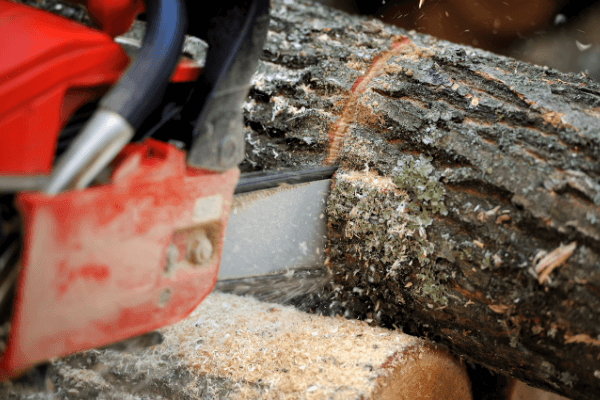- Home
- Domestic Hot Water
- Sidearm Heat Exchanger Not Working
Sidearm Heat Exchanger Not Working?
This post may contain affiliate links so I earn a commission.
Why is my sidearm heat exchanger not working?
This is a question a lot of people have asked....including myself.
If you have an outdoor wood furnace, hooking up a sidearm heat exchanger can be a great way to heat your domestic hot water.
To function, the heat exchanger is mounted to the side of your hot water heater.
A process called thermosiphon creates heat exchange through convection, heating the water inside your tank.
The thermosiphon process draws cold water from your hot water heater through the heat exchanger without the use of any mechanical devices.
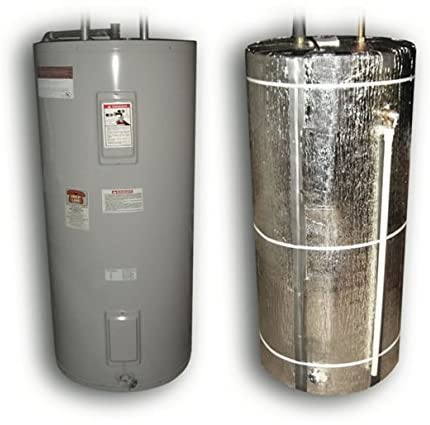
Sounds great right?
It is.....if it works.
The thermosiphon process can be somewhat temperamental.
If installed and maintained correctly, a sidearm heat exchanger can work great.
However, sometimes the slightest error can leave you frustrated and confused.
Here are some tips and suggestions to help fix your sidearm heat exchanger.
Proper Installation Of Your Sidearm Heat Exchanger
Depending on the manufacturer, the instructions will tell you to plumb the top of the heat exchanger into the hot water outlet on the tank or into the pressure relief valve.
The particular model I use is plumbed into hot water outlet and it works great.
If your sidearm heat exchanger is not working, here are a few things to check:
SOLUTION #1
Newer water heaters have a small plastic anti syphon valve inside the hot water outlet.
If you look inside the hot water outlet on top of the tank you should see a small plastic flap.
This prevents back flow into the water heater which is supposed to help save energy.
If you have your heat exchanger plumbed into the tanks hot water outlet, this plastic valve will disrupt the thermosiphon process.
To removed the valve, simply reach down in with a pair of needle nose pliers and rip it out.
SOLUTION #2 - SIDEARM HEAT EXCHANGER NOT WORKING
Never extend the top of the heat exchanger any higher than 3-4 inches above the top of the hot water heater.
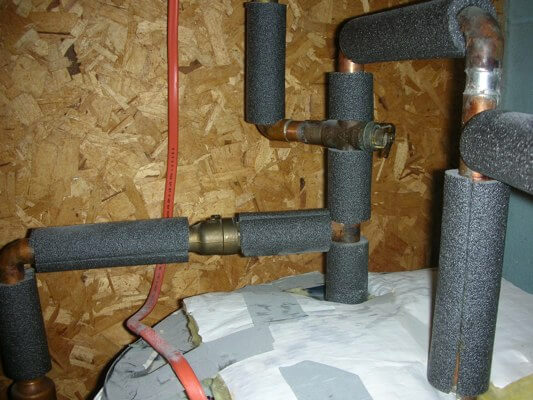
You can see in this picture how the heat exchanger is plumbed into the hot water outlet.
Notice how its nearly level with the top of the tank?
Also, avoid using any unnecessary bends or angles when plumbing in your heat exchanger.
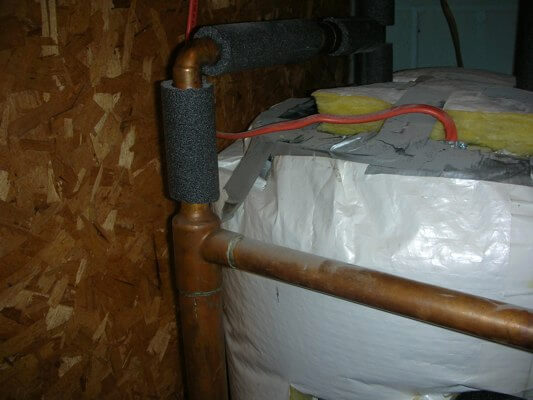
SOLUTION #3
What's the temperature of the water inside your wood furnace set at?
If your furnace is like mine, you can manually adjust the operating temperature of your outdoor wood furnace.
In the past, to help reduce the amount of firewood we would burn, I turned the water temperature down to about 145-150 degrees.
While this was plenty warm enough to heat our house, it really disrupted the thermosiphon process.
The hot water inside the tank would just be luke warm at best and only a small amount of water was heated.
Turning the water temperature up to 180 degrees makes a huge difference.
After I turned up the water temperature the heat exchanger started working great and it produced all the hot water we needed.
SOLUTION #4 - SIDEARM HEAT EXCHANGER NOT WORKING
Why is your sidearm heat exchanger not working?
When is the last time you flushed out your hot water heater?
This year for no apparent reason the heat exchanger was not working quite right.
We were getting a little hot water, but nothing like before.
It turns out the sidearm heat exchanger was clogged.
We have hard water causing calcium deposits to form over time.
We also have very fine sand which accumulates in the bottom of the tank.
Over time, the accumulation of calcium and fine sand were enough to disrupt the thermosiphon.
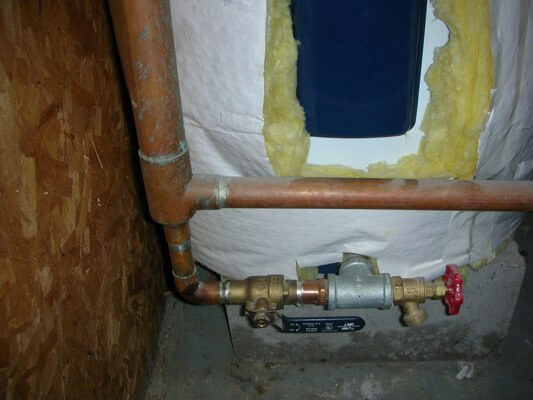
In this picture you can see how the bottom of the heat exchanger is plumbed into the bottom drain valve on the water heater.
Over time, the deposits accumulated in the bottom of the tank, forming a clog in the bottom T shaped assembly.
Fixing it was easy.
I hooked up a hose to the bottom of the tank and drained out the existing water.
I could instantly see the problem when I began draining the tank.
Calcium, sludge and fine sand particles we all trapped on the bottom.
After about an hour of flushing the tank out with fresh water it was clean.
Now, the heat exchanger works great and we have not had a problem since.
Sidearm Heat Exchanger Not Working - Overall
Why is your sidearm heat exchanger not working?
These are just a few common issues to consider.
If working properly, a sidearm heat exchanger can adequately supply your household with enough hot water to meet your everyday needs.
My family of 4 uses this heat exchanger on a 50 gallon electric hot water heater.
The water heater is completely turned off and it supplies all the hot water we need.
Remember, the thermosiphon process is slow and the recovery speed is much slower using a heat exchanger compared to the elements inside the tank.

About the Author
Obsessed with firewood, Nick is behind over 350+ of Firewood For Life's articles, as well as countless reviews, guides and YouTube videos to help readers like you reduce heating costs and create the perfect fire.
